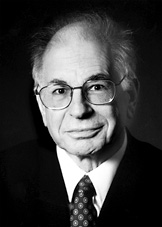From ScienceBlogs.com
1960s documentary: Self-experimenting with magic mushrooms
Originally Posted on: July 17, 2008 10:11 AM, by Mo
In the January 4th, 1961 episode of One Step Beyond, director and presenter John Newland ingests psilocybin under laboratory conditions, to investigate whether or not the hallucinogenic mushroom can enhance his abilities of extra-sensory perception.
The programme was apparently inspired by a 1959 book called The Sacred Mushroom, by parapsychologist Andrija Puharich, who is known for taking the spoon-bending fraudster Uri Geller to the United States for investigation.
In the first part of the programme (embedded below), Newland, Puharich and others travel to Mexico to collect mushroom samples. They then return to Puharich's lab in Palo Alto, where Newland's ESP abilities are tested before and after ingestion of several mushroom stems.
The programme is of historical interest, as it was made some years before the widespread use of LSD led researchers to stop conducting psychedelic research. It therefore includes a brief mention of the potential therapeutic effects of psilocybin for psychiatric patients.
Parts 2 and 3 of the episode are also available on YouTube.
———————-
"And then, oddly enough, the first sound we hear as the chemical in the mushroom takes effect is… laughter."
This video is a lot of fun and introduced me to Andrija Puharich, who wrote The Sacred Mushroom: Key to the Door of Eternity (1959). UCLA research psychologist Barbara Brown (who invented biofeedback), also makes the trip down to Mexico. But it is most fascinating to see the show's host, John Newland in an on-camera lab setting, have his extrasensory perception skills tested under the influence of mushrooms. Really makes me wonder where we might be now if science had continued to have access to these substances.
But I wonder if Thelma Moss ever met John Newland through Barbara Brown who was also at UCLA. I found one clip on the net that connects Moss and Brown… "In Prague I was warmly and hospitably received by Dr. Rejdak, who is perhaps the most active parapsychologist in Czechoslovakia. In the company of two other Ameri cans, Dr. Thelma Moss and Dr. Barbara Brown, we were shown films of recent experiments in the telepathic trans mission of taste impression on a hypnotic subject. I'm not sure why I'm even curious but somehow it's interesting. Another connection to this whole cast of characters is Uri Geller. As mentioned above, Andrija Puharich was responsible for bringing Uri Geller to the US for experiments. You can easily find Uri connections to Thelma Moss and Barbara Brown.
While browsing Uri Geller's site I noticed this in his sidebar: are your eyes attracted to 11.11? But we'll save that for another day.


